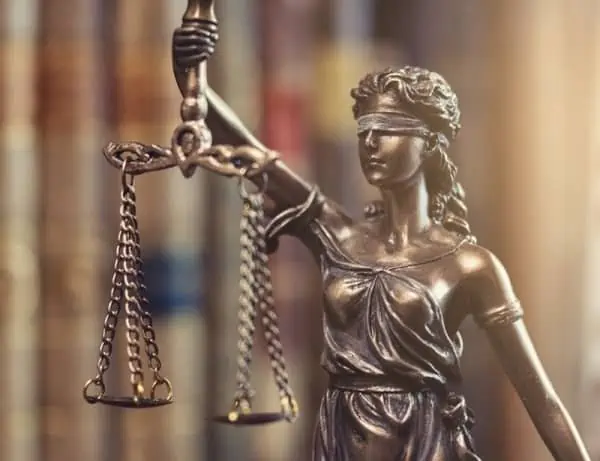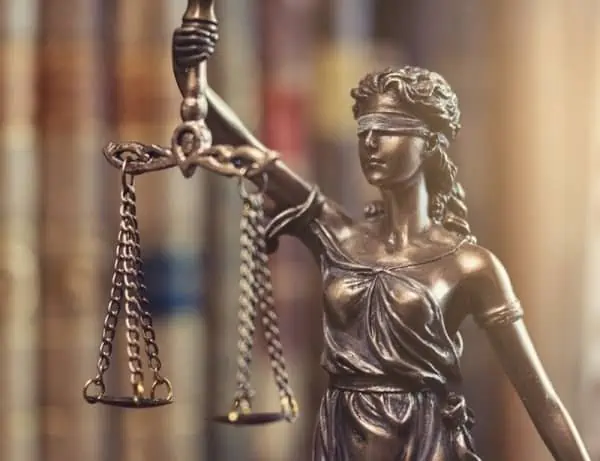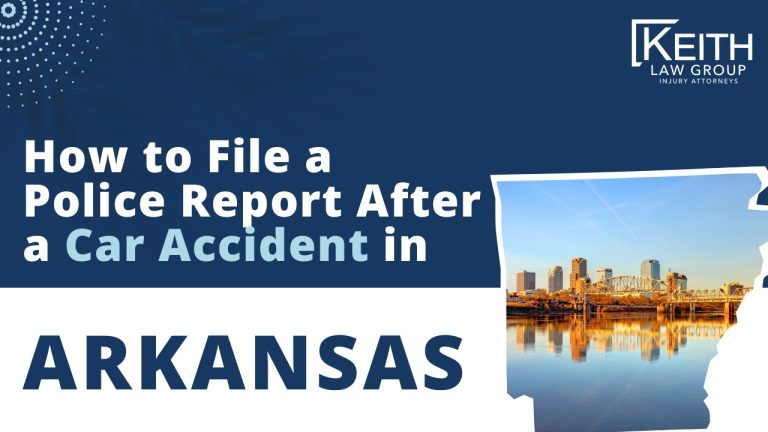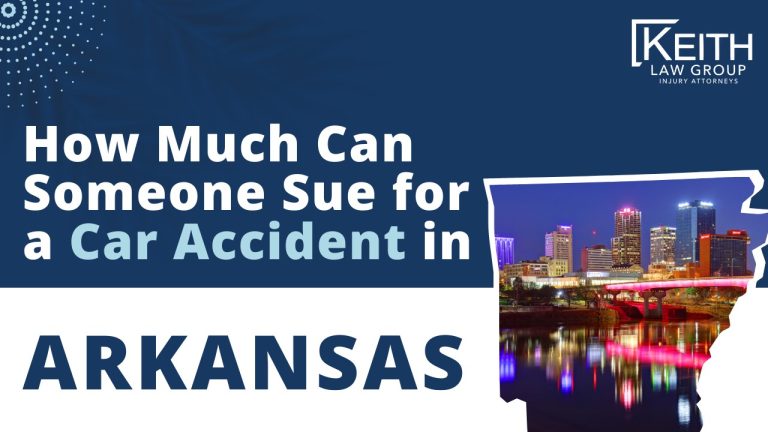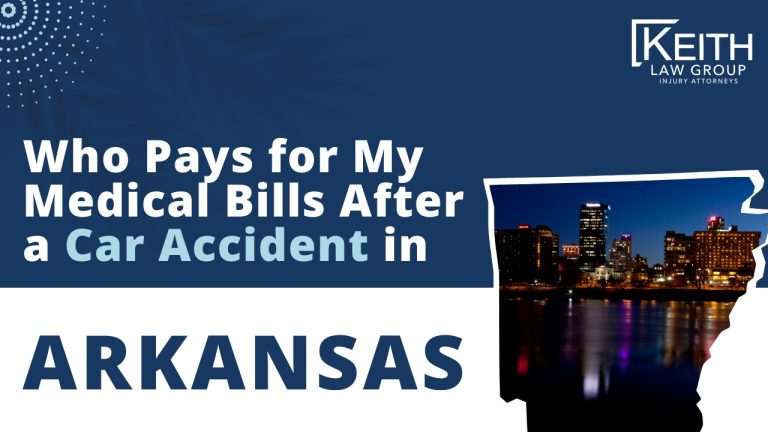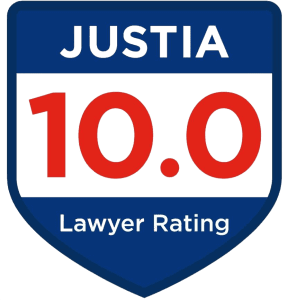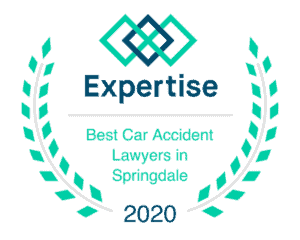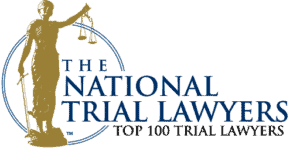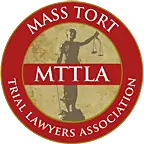- Published: June 19th, 2023
- Last Updated: October 10th, 2024

Attorney Sean T. Keith has been a personal injury lawyer for 30+ years, a nationally recognized Top 100 Trial Lawyer, and top car accident lawyer & motor vehicle accident lawyer in Arkansas.
Legally Reviewed
This article has been written and reviewed for legal accuracy and clarity by the team of writers and attorneys at Keith Law Group and is as accurate as possible. This content should not be taken as legal advice from an attorney. If you would like to learn more about our owner and experienced injury lawyer, Sean T. Keith, you can do so here.
Fact-Checked
Keith Law Group does everything possible to make sure the information in this article is up to date and accurate. If you need specific legal advice about your case, contact us. This article should not be taken as advice from an attorney.
Sean Keith's Accollades & Practice Areas He Specializes In
- Over $20 Million recovered in Medical Device Injury Lawsuits.
- Over $13 Million recovered in Car Accident Lawsuits and other Motor Vehicle Accident Lawsuits.
- Over $100 Million recovered in total on behalf of clients.
- Sean represents clients in cases involving personal injuries, car accidents, motorcycle accidents, truck accidents, wrongful death, slip and falls, nursing home abuse cases, nursing home elopement cases, and more.
Things to Know About T-Bone Car Accidents in Arkansas
Did you know that T-bone car accidents are alarmingly common in the state of Arkansas?
These collisions often have devastating consequences for victims, resulting in severe injuries or even fatalities.
Personal injury lawyers can help motorists understand their legal options and seek justice through a personal injury claim.
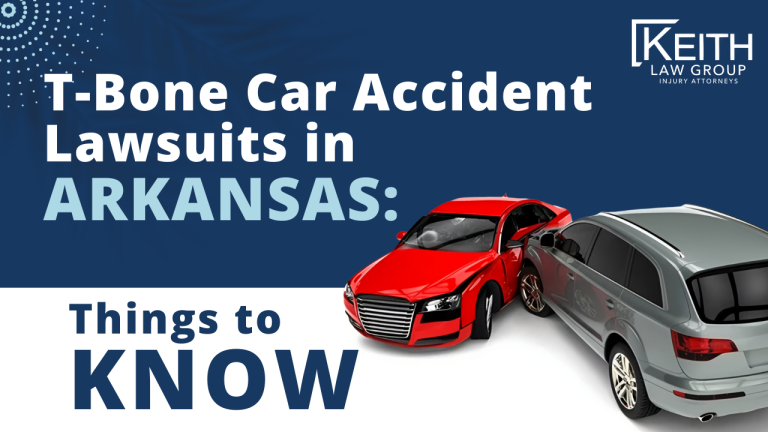
It’s crucial for anyone involved in such an accident, especially with oncoming traffic, to know their rights and seek the assistance they need.
We’ll also discuss how understanding your legal rights with the help of a personal injury lawyer can make all the difference when navigating these challenging situations for accident victims.
So buckle up, motorist, and let’s hit the road on this important topic of personal injury claims!
Table of Contents
Common Causes of T-Bone Accidents in Arkansas
Failure to Yield at Intersections
One major cause of T-bone car accidents in Arkansas is the failure to yield at intersections, often leading to common injuries.
This occurs when a driver does not give the right-of-way to another vehicle during a left turn, resulting in a crash and potential common injury.
Some examples include:
- Running a red light or stop sign
- Turning left without yielding to oncoming traffic
- Entering an intersection without checking for cross traffic
These situations of vehicle crashes can lead to severe injuries, such as bone collision and common injury, and even fatalities, as vehicles often collide at high speeds in broadside collision accidents, resulting in accident victims.
Distracted Driving Incidents
Distracted driving is another common cause of T-bone crash accidents in Arkansas.
When drivers are not paying attention to the road, they may fail to notice other vehicles approaching from the side at an intersection.
Distractions can come in many forms, such as:
- Texting or using a smartphone while driving
- Eating or drinking behind the wheel
- Adjusting radio stations or GPS devices
- Conversations with passengers
By taking their eyes off the road, even for a moment, drivers increase their risk of causing a T-bone accident at the side of a traffic control device, especially when making a turn at the scene.
Speeding and Reckless Behavior
Speeding and reckless behavior also contribute significantly to T-bone car accidents in Arkansas.
When drivers speed through intersections or engage in dangerous maneuvers, they put themselves and others at risk.
Examples of reckless behaviors that can lead to T-bone accidents include:
- Not obeying traffic control devices, taking a turn in a wrong way, and speeding on the side streets.
- Racing through yellow lights instead of slowing down
- Weaving in and out of traffic without signaling
- Ignoring traffic signs and signals altogether
When drivers engage in these actions, they may be unable to react quickly enough if another vehicle enters their path or comes from the side, resulting in a devastating collision or even a bone accident on the right way.
To sum up, there are several common causes of t-bone car accidents in Arkansas involving drivers:
- Failure to yield at intersections: Drivers must always be aware of their surroundings and follow traffic laws to avoid collisions, especially when turning right, as this can lead to a bone accident.
- Distracted driving incidents: It’s crucial for drivers to keep their focus on the road and avoid distractions that can lead to bone collision accidents, finding the right way, and staying safe.
- Speeding and reckless behavior: Maintaining a safe speed and practicing defensive driving techniques can help prevent t-bone accidents for every driver on the way, ensuring the right safety measures are taken.
By understanding these causes, drivers can take the right steps and find the best way to reduce their risk of being involved in a T-bone car accident in Arkansas.
Stay safe out there!
Injuries Sustained in T-Bone Car Accidents
Whiplash and Neck Injuries
One common injury in T-bone car accidents for the driver is whiplash.
This occurs when the head suddenly moves back and forth in a forceful way, causing strain on the neck muscles and ligaments.
Symptoms of whiplash include:
- Pain and stiffness in the neck
- Headaches
- Dizziness
- Blurred vision
- Fatigue
Neck injuries can also result from the force of impact during a bone collision, especially for a driver not wearing the right way of protection.
These may range from minor strains to more severe injuries such as herniated discs or spinal cord damage.
Broken Bones and Fractures
Broken bones are another common injury sustained in T-bone crashes.
The force exerted during a bone crash can cause fractures to various parts of the body, including the driver in such a way:
- Ribs
- Arms
- Legs
- Pelvis
- Skull
Fractures can be either simple (a clean break) or compound (the bone protrudes through the skin).
Treatment for broken bones, such as those sustained by a driver in an accident, typically involves immobilization with a cast or splint, followed by physical therapy to regain strength and mobility.
Traumatic Brain Injuries (TBI)
Head injuries are prevalent in t-bone collisions due to the sudden impact on one side of the the other vehicle side, often affecting the driver.
Traumatic brain injuries (TBI) occur when an external force causes damage to brain tissue, resulting in temporary or permanent impairment of cognitive function.
Some symptoms of TBI include:
- Loss of consciousness
- Confusion or disorientation
- Memory problems
- Mood changes, irritability, or depression
TBIs can range from mild concussions to severe cases requiring surgery or long-term rehabilitation, often resulting from bone accidents, bone collisions, or other driver–related incidents.
Back Injuries
The spine is particularly vulnerable for a driver during car accidents, especially in bone collisions where vehicles collide at high speeds and odd angles.
Common back injuries sustained during these accidents include:
- Sprains and strains
- Herniated discs
- Spinal cord injuries
These back injuries from bone accidents or driver-related incidents can result in chronic pain, limited mobility, and even paralysis in severe cases.
Minor Injuries
Not all T-bone accident injuries involving drivers are severe; some minor injuries can still cause discomfort and inconvenience.
Examples of other drivers with minor driver injuries include:
- Bruises and contusions
- Cuts and lacerations
- Whiplash (in milder cases)
While these bone accidents may not be life-threatening, they still require medical attention to ensure proper healing, especially for a driver.
Determining Fault in Arkansas T-Bone Accidents
Police Reports and Witness Statements
To determine fault in a T-bone car accident, it’s essential to gather evidence from multiple sources.
One reliable source of information is the official police report.
The attending officer will document their observations and conclusions about the accident, which can be valuable when determining fault involving the drivers involved.
Another crucial piece of evidence comes from witness statements.
People who saw the accident happen can provide an unbiased account of events, giving more context to understand which driver is at fault.
Some examples of useful witness statements include:
- Descriptions of each driver’s actions leading up to the bone accident and crash
- Observations on traffic lights or signs that may have been ignored, leading to bone accidents
- Statements regarding weather conditions or visibility issues
Traffic Laws and Right-of-Way Rules
Understanding local traffic laws and right-of-way rules is vital when determining fault in a T-bone accident.
Arkansas has specific laws governing traffic light and how drivers should behave at intersections, including:
- Yielding to other vehicles already within the intersection
- Obeying traffic signals and signs
- Proceeding with caution when entering an uncontrolled intersection
By examining these rules, it becomes easier to identify which driver may have violated them, contributing to the accident.
Vehicle Damage Analysis
A thorough analysis of vehicle damage can also help determine fault in a T-bone car accident.
The location and severity of damage on both vehicles involved can provide clues as to who was responsible for the collision.
For example:
- If one vehicle has significant front-end damage while another has severe side impact damage in a bone accident, it could suggest that the first vehicle failed to yield or ran a red light.
- On the other hand, if both vehicles show similar levels of damage on their sides in a bone accident, it could indicate that neither driver had proper control over their vehicle.
How an Arkansas Car Accident Injury Lawyer Can Help
Navigating Complex Legal Processes
Car accident lawyers are experts in dealing with the complex legal processes that come with T-bone car accidents.
They can help you:
- Understand your rights and legal options
- File a lawsuit or claim against the responsible party
- Gather necessary evidence to support your case
- Represent you in court if needed
Navigating these processes on your own can be overwhelming, but an experienced car accident attorney will guide you every step of the way.
Negotiating with Insurance Companies
Insurance companies often try to minimize payouts or deny claims altogether.
A skilled car accident lawyer knows how to:
- Communicate effectively with insurance adjusters
- Review and analyze policy details to maximize coverage
- Present a strong case for fair compensation
Don’t let insurance companies take advantage of you after a bone accident – enlist the help of a knowledgeable personal injury attorney.
Maximizing Compensation for Victims
A T-bone accident lawyer’s primary goal is to ensure their clients receive maximum compensation for their injuries and damages.
They do this by:
- Assessing all potential sources of recovery, such as:
- At-fault driver’s insurance coverage
- Your own uninsured/underinsured motorist coverage
- Other third-party liability (e.g., employer, vehicle manufacturer)
- Evaluating both economic and non-economic damages, including:
- Medical bills
- Lost wages
- Pain and suffering
With a dedicated personal injury lawyer on your side, you’ll have peace of mind knowing they’re fighting for your best interests.
Why Choose an Arkansas Car Accident Injury Lawyer?
Arkansas car accident attorneys have unique knowledge of state-specific laws and regulations that impact your case.
By choosing a local law firm, you’ll benefit from:
- Familiarity with local courts and judges
- Understanding of Arkansas-specific insurance laws
- Access to local resources, such as medical providers and expert witnesses
Don’t leave your case in the hands of just any lawyer – trust an experienced Arkansas personal injury attorney.
Get a Free Consultation Today
If you’ve been involved in a T-bone car accident, don’t wait to explore your legal options.
Many law firms offer free consultations, allowing you to:
- Discuss your case with an experienced attorney
- Receive personalized advice on how to proceed
- Determine if hiring a lawyer is the right choice for you
Take advantage of this valuable resource and get started on the road to recovery today.
Gathering Evidence and Proving Liability in T-Bone Accident Cases in Arkansas
Obtaining Surveillance Footage
One of the most crucial steps in proving liability in a T-bone car accident case is gathering surveillance footage.
This type of evidence can be instrumental in showing who was at fault for the collision.
Here are some ways to obtain this footage:
- Check nearby businesses or homes for security cameras that may have captured the incident.
- Request traffic camera recordings from local authorities.
- Reach out to witnesses who may have recorded the accident on their phones.
Having clear video evidence can help you establish what happened, making it easier to prove liability and secure compensation for damages.
Documenting Medical Records
Another key piece of evidence in T-bone car accidents is your medical records.
These documents will show the extent of your injuries and help you demonstrate how they were caused by the crash.
To effectively use medical records as evidence, follow these steps:
- Seek immediate medical attention after the accident.
- Keep detailed notes about your symptoms and treatment.
- Request copies of all relevant medical records from your healthcare providers.
- Consult with a personal injury attorney to ensure that your documentation is thorough and properly presented.
By having well-documented medical records, you can demonstrate the severity of your injuries and directly link them to the T-bone car accident.
Expert Testimony on Accident Reconstruction
Sometimes, surveillance footage and medical records aren’t enough to prove fault or liability in a T-bone car accident case.
In such instances, expert testimony on accident reconstruction can be invaluable for strengthening your claim.
Consider these points when seeking an expert witness:
- Look for professionals with experience in reconstructing car accidents, such as engineers or former law enforcement officers.
- Ensure that they have relevant qualifications and certifications.
- Discuss their findings with your attorney before presenting them in court.
An expert’s analysis can help clarify details about how the accident occurred, shedding light on who was at fault and supporting your claim for compensation.
Compensation Sources and Damages in T-Bone Accidents
Medical Expenses Coverage
One of the main compensation sources in a T-bone car accident is medical expenses.
Victims often incur significant costs for treatment, rehabilitation, and ongoing care.
Some examples of medical expenses include:
- Hospital bills
- Doctor visits
- Physical therapy
- Medications
- Medical equipment (e.g., wheelchairs, crutches)
It’s crucial to keep detailed records of all medical expenses to ensure full compensation.
Lost Wages Recovery
Another significant source of compensation in T-bone accidents is lost wages.
When an accident leaves a victim unable to work, they may be entitled to recover their lost income.
This includes not only the wages they would have earned during their recovery period but also any potential future earnings if their injuries result in long-term disability or reduced earning capacity.
To calculate lost wages, consider factors such as:
- The amount of time missed from work due to injury
- The victim’s average salary or hourly wage
- Any bonuses or commissions that were expected during the recovery period
Documentation like pay stubs and tax returns can help establish a claim for lost wages.
Pain, Suffering, and Emotional Distress Damages
T-bone car accidents can lead to to suffer severe injuries, physical pain and emotional distress for victims.
These noneconomic damages are harder to quantify than medical expenses and lost wages but can still be included in a settlement or lawsuit.
Some factors considered when calculating pain and suffering damages include:
- Severity of the injuries sustained
- Duration of the pain experienced
- Impact on daily life activities
Emotional distress damages may also be awarded if the victim suffers psychological trauma as a result of the accident, such as anxiety, depression, or post-traumatic stress disorder (PTSD).
Punitive Damages: Holding Negligent Parties Accountable
In some cases involving extreme negligence or recklessness, punitive damages may be awarded to the victim.
These damages are not meant to compensate the victim but rather to punish the liable party and deter similar behavior in the future.
Examples of situations where punitive damages might be appropriate include:
- Drunk driving
- Excessive speeding
- Intentionally running a red light
Ensuring Full Compensation
To ensure full compensation for all damages, it’s essential to work with an experienced attorney who can navigate the complex liability issues involved in T-bone car accidents.
They can help gather evidence, negotiate with insurance companies, and even take your case to court if necessary.
Conclusion: T-Bone Car Accidents and Legal Options in Arkansas
In conclusion, t-bone car accidents in Arkansas can result from various causes, including driver negligence and poor road conditions.
These accidents often lead t bone accidents occur due to severe injuries and significant financial burdens for the victims.
Determining fault is crucial in seeking compensation, and an experienced Arkansas car accident injury lawyer can help navigate the complex legal process.
Gathering evidence and proving liability are essential steps in building a strong case.
Compensation sources may include insurance coverage, personal assets of the either at fault driver at-fault party, or even third-party entities responsible for contributing factors like dangerous road conditions or faulty vehicle parts.
Don’t hesitate to consult with a skilled attorney who can guide you through this challenging time and work towards securing the compensation you deserve.
Remember that your rights matter – take action today!
Frequently Asked Questions
-
How long do I have to file a claim after a T-bone accident in Arkansas?
In Arkansas, you typically have three years from the date of the accident to file a personal injury lawsuit.
However, it’s best to consult with an attorney as soon as possible to ensure all necessary steps are taken promptly.
-
What if both drivers are partially at fault for the accident?
Arkansas follows a modified comparative negligence rule, meaning that if one driver or both drivers share some responsibility for the accident, their recovery may be reduced by their percentage of fault.
An experienced attorney can help determine any shared responsibility and how it may impact your case.
-
Can I still receive compensation if my injuries aren't immediately apparent after the accident?
Yes!
Sometimes injuries sustained in t-bone accidents don’t become evident until days or weeks later.
It’s essential to seek medical attention as soon as possible after an accident and keep detailed records of any treatment received.
-
What types of damages can I recover in a T-bone car accident case?
Damages in t-bone car accident cases can include medical expenses, lost wages, pain and suffering, property damage, and more.
An experienced attorney can help determine the full extent of your damages and fight for the compensation you deserve.
-
How much does it cost to hire an Arkansas car accident injury lawyer?
Many Arkansas car accident injury lawyers work on a contingency fee basis, meaning they don’t get paid unless they successfully recover compensation for you.
This allows you to focus on healing while your attorney handles the legal aspects of your case.
Be sure to discuss any fees upfront with your chosen lawyer before proceeding.
All Posts for the Car Accident Lawsuit Legal Guide
Practice Areas
- 3M Earplug
- Belviq
- Bladder Sling
- Camp Lejeune Water Contamination
- Defective Medical Device
- Hernia Mesh
- Hip Replacement
- NEC Infant Formula
- Medtronic Insulin Pump
- Paraquat
- Philips CPAP
- Roundup
- Talcum Powder
- Tylenol Autism & ADHD
- Zantac
- Bicycle Accidents
- Boat Accidents
- Construction Accidents
- Dog Bite
- Drug Injuries
- Electric Shock Injuries
- Nursing Home Abuse
- Nursing Home Bedsore
- Nursing Home Falls
- Nursing Home Infection
- Nursing Home Sexual Abuse
- Personal Injuries
- Premises Liability
- Slip and Fall
- Traumatic Brain Injuries
- Wrongful Death
- 3M Earplug
- Belviq
- Bladder Sling
- Camp Lejeune Water Contamination
- Defective Medical Device
- Hernia Mesh
- Hip Replacement
- NEC Infant Formula
- Medtronic Insulin Pump
- Paraquat
- Philips CPAP
- Roundup
- Talcum Powder
- Tylenol Autism & ADHD
- Zantac
- Bicycle Accidents
- Boat Accidents
- Construction Accidents
- Dog Bite
- Drug Injuries
- Electric Shock Injuries
- Nursing Home Abuse
- Nursing Home Bedsore
- Nursing Home Falls
- Nursing Home Infection
- Nursing Home Sexual Abuse
- Personal Injuries
- Premises Liability
- Slip and Fall
- Traumatic Brain Injuries
- Wrongful Death
You pay
Nothing
unless we win
Do You Have A Case?
Recent Legal Posts & Articles
Recent Legal Guides

Choose Us For Your Personal Injury Case
- Available 24/7
- No Upfront Fees
- Free Case Evaluation
- No Fees Unless We Win!

